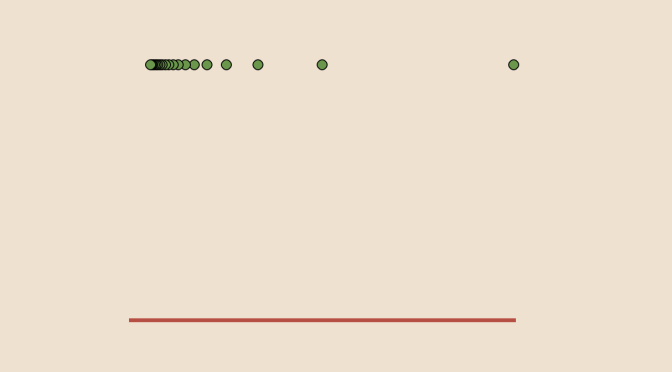Let f and g be two real functions and a∈R∪{+∞}. We provide here examples and counterexamples regarding the limits of f and g.
If f has a limit as x tends to a then |f| also?
This is true. It is a consequence of the reverse triangle inequality ||f(x)|–|l||≤|f(x)–l| Hence if limx→af(x)=l, limx→a|f(x)|=|l|
Is the converse of previous statement also true?
It is not. Consider the function defined by: f:R⟶R1n⟼−1 for n≥1 integerx⟼1 otherwise |f| is the constant function equal to 1, hence |f| has 1 for limit as x tends to zero. However limx→0f(x) doesn’t exist.
If f has a limit at a and g not, then f+g doesn’t have a limit at a?
This is a tricky question! The case where limx→af(x)=l is finite is covered in the next paragraph. If l is infinite, f+g can have a limit at a. Consider g:(0,1)⟶Rx⟼sin1x and f:(0,1)⟶Rx⟼1x We have limx→0+f(x)=+∞, g doesn’t have a right limit at 0 but limx→0+(f+g)(x)=+∞
If f has a finite limit at a and g not, then f+g doesn’t have a finite limit at a?
This is true. If f+g was having a finite limit at a, writing g=(f+g)−f we see that g would have a limit as the difference of two functions having a limit at a point has a limit at that point. In contradiction with our hypothesis.
If f is defined on (u,v) and monotonic, then f has left and right limits at all a∈(u,v)?
This is true. Suppose that f is increasing (if f is decreasing, just consider −f). We prove that f has a left limit for all a∈(u,v), the proof being similar for the right limit. Consider the set S={f(x)|x<a}. S is bounded by f(a) and not empty as f(u+a2)∈S. Therefore S has a least upper bound l. For any ϵ>0, there exists y<a with l−ϵ≤f(y)≤l. As f is increasing we have for y<x<a f−ϵ≤f(y)≤f(x)≤l proving that limx→a−f(x)=l.
If f has finite left and right limits for all a∈[u,v] then f is bounded on [u,v]?
This is true. Suppose that (an) is a sequence of [u,v] with (f(an)) unbounded. As [u,v] is compact one can find a converging subsequence (aαn) converging to a∈[u,v] with (f(aαn)) unbounded. Then either an infinite number of elements of (aαn) are less than a and f cannot have a finite left limit at a or an infinite number of elements of (aαn) are larger than a and f cannot have a finite right limit at a. In both cases we get a contradiction, hence f is bounded on [u,v].
What about the reverse of previous statement?
It is false. Consider the Dirichlet function f:R⟶Rx⟼1 for x∈Qx⟼0 for x∈R∖Q f is bounded but doesn’t have a limit at any a∈R as Q is dense in [0,1].
A real function f has a limit at least one point a∈R?
Is wrong. Consider again Dirichlet function of previous paragraph.
A function continuous at a is continuous on an interval containing a?
Doesn’t hold. Consider f:R⟶Rx⟼|x| for x∈Qx⟼0 for x∈R∖Q f is continuous at 0 as we have |f(x)|≤|x| for all x∈R.
However for a≠0 f is not continuous at a as:
- if a∈Q, we have f(a)>0 and f(xn)=0 for a sequence (xn) of irrational points converging to a.
- if a∈R∖Q, we have f(a)=0 and f(xn)→|a| >0 for a sequence (xn) of rational points converging to a.
There exists at least an interval (u,v) on which f is bounded?
Is wrong. Have a look to a nowhere locally bounded function.

